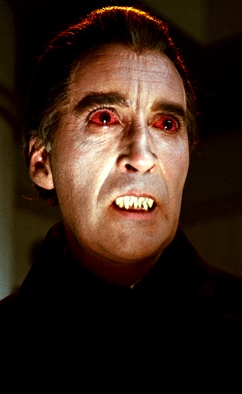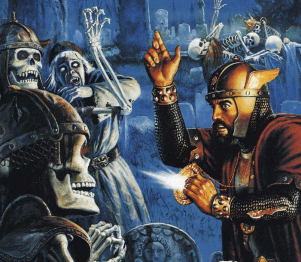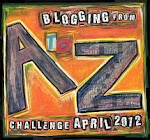
Darkness falls across the land. The midnight hour is close at hand. Creatures crawl in search of blood to terrorize y’all’s neighborhood. The foulest stench is in the air. The funk of forty thousand years and grizzly ghouls from every tomb are closing in to seal your doom. Though you fight to stay alive, your body starts to shiver, for no mere mortal can resist the evil of the Thriller.
Design Notes: The Thriller is a town killer of a monster. With its skills, spells, and native Charisma, it can easily infiltrate a community. Once there, it can quickly transform dozens of residents into dancing ghouls and ghasts, which further spreads the undead plague. Drop the Thriller into any of your campaign’s population centers and you have the makings for an undead apocalypse scenario.
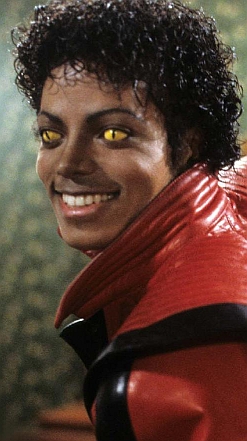
The Thriller
Unique ghast dirge bard 10
CR 15; XP 51,200
CE Medium undead
Init +6; Senses darkvision 60 ft.; Perception +15
DEFENSE
AC 28, touch 19, flat-footed 22 (+5 armor, +3 deflection, +6 Dex, +4 natural)
hp 141 (12d8+84); fast healing 10
Fort +13, Ref +16, Will +21
Defensive Abilities channel resistance +4; Resist fire 10; Immune undead traits
OFFENSE
Speed 40 ft.
Melee bite +16 (1d6+5 plus disease and paralysis) and 2 claws +16 (1d8+5 plus paralysis), or
Ranged +2 human bane shortbow (1d6+2 plus 1d6 electricity, x3) N.B. Add +2 to attack rolls against humans. Damage versus humans is 1d6+4 plus 2d6 plus 1d6 electricity.
Special Attacks irresistible dance, dance of the dead, haunting refrain, paralysis (1d4+1 rounds, DC 25), stench
Spells per Day (CL 10th; concentration +19):
4th (2/day)- dance of a hundred cuts, freedom of movement, greater false life
3rd (5/day)- dispel magic, displacement, fear (Will DC 22 with -3 penalty), mass feather step
2nd (6/day)- cat’s grace, detect thoughts (Will DC 21), distressing tone (Fort DC 21), enthrall (Will DC 21), seducer’s eyes, unshakable chill (Fort DC 21)
1st (7/day)- charm person (Will DC 20), chord of shards (Ref DC 20), disguise self, ear-piercing scream (Fort partial 20), innocence, interrogation (Fort 20)
0th- dancing lights, detect magic, lullaby, mage hand, read magic, summon instrument
STATISTICS
Str 17, Dex 23, Con —, Int 19, Wis 20, Cha 29 (25)
Base Atk +8; CMB +11; CMD 27
Feats Brain Eater, Civilized Ghoulishness, Improved Natural Attack, Lingering Performance, Spellsong, Weapon Finesse
Skills Acrobatics +24 (+28 jumping), Bluff +22, Climb +8, Diplomacy +22, Disguise +34, Knowledge (arcana) +14, Knowledge (religion) +14 (+19 to identify undead), Perception +15, Perform (dance) +22, Perform (percussion) +22, Perform (sing) +22, Sense Motive +15, Spellcraft +9, Stealth +21, Use Magic Device +22; Racial Modifiers +10 Disguise
Languages Common, Dwarven, Elven, Gnome, Necril
SQ command ghasts and ghouls, haunted eyes, secrets of the grave
SPECIAL ABILITIES
Bardic Knowledge (Ex): The Thriller adds half its bard level (+5) to all Knowledge skill checks and may make all Knowledge skill checks untrained.
Bardic Performance: The Thriller is trained to use the Perform skill to create magical effects on those around it, including itself if desired. It can use this ability for a 29 number of rounds per day. Each round, the Thriller can produce any one of the types of bardic performance that it has mastered. Starting a bardic performance is a move action, but it can be maintained each round as a free action. Changing a bardic performance from one effect to another requires the Thriller to stop the previous performance and start a new one as a standard action. A bardic performance cannot be disrupted, but it ends immediately if the Thriller is killed, paralyzed, stunned, knocked unconscious, or otherwise prevented from taking a free action to maintain it each round. The Thriller cannot have more than one bardic performance in effect at one time.
Each bardic performance has audible components, visual components, or both. If a bardic performance has audible components, the targets must be able to hear the Thriller for the performance to have any effect, and such performances are language dependent. A deaf Thriller has a 20% change to fail when attempting to use a bardic performance with an audible component. If it fails this check, the attempt still counts against its daily limit. Deaf creatures are immune to bardic performances with audible components.
If a bardic performance has a visual component, the targets must have line of sight to the Thriller for the performance to have any effect. A blind Thriller has a 50% chance to fail when attempting to use a bardic performance with a visual component. If it fails this check, the attempt still counts against its daily limit. Blind creatures are immune to bardic performances with visual components.
* Countersong (Su): The Thriller can counter magic effects that depend on sound (but not spells that have verbal components.) Each round of the countersong it makes a Perform (percussion or sing) skill check. Any creature within 30 feet of the Thriller (including the Thriller itself) that is affected by a sonic or language-dependent magical attack may use the Thriller’s Perform check result in place of its saving throw if, after the saving throw is rolled, the Perform check result proves to be higher. If a creature within range of the countersong is already under the effect of a non-instantaneous sonic or language-dependent magical attack, it gains another saving throw against the effect each round it hears the countersong, but it must use the Thriller’s Perform skill check result for the save. Countersong does not work on effects that don’t allow saves. Countersong relies on audible components.
* Distraction (Su): The Thriller can use its performance to counter magic effects that depend on sight. Each round of the distraction, it makes a Perform (dance) skill check. Any creature within 30 feet of the Thriller (including the Thriller itself) that is affected by an illusion (pattern) or illusion (figment) magical attack may use the Thriller’s Perform check result in place of its saving throw if, after the saving throw is rolled, the Perform check result proves to be higher. If a creature within range of the distraction is already under the effect of a non-instantaneous illusion (pattern) or illusion (figment) magical attack, it gains another saving throw against the effect each round it sees the distraction, but it must use the Thriller’s Perform check result for the save. Distraction does not work on effects that don’t allow saves. Distraction relies on visual components.
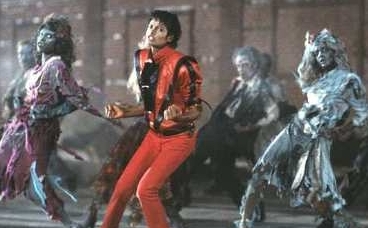
* Fascinate (Su): The Thriller can use its performance to cause three creatures to become fascinated with it. Each creature to be fascinated must be within 90 feet, able to see and hear the Thriller, and capable of paying attention to it. The Thriller must also be able to see the creatures affected. The distraction of a nearby combat or other dangers prevents the ability from working.
Each creature within range receives a Will save (DC 24) to negate the effect. If a creature’s saving throw succeeds, the Thriller cannot attempt to fascinate that creature again for 24 hours. If its saving throw fails, the creature sits quietly and observes the performance for as long as the Thriller continues to maintain it. While fascinated, a target takes a –4 penalty on skill checks made as reactions, such as Perception checks. Any potential threat to the target allows the target to make a new saving throw against the effect. Any obvious threat, such as someone drawing a weapon, casting a spell, or aiming a weapon at the target, automatically breaks the effect. Fascinate is an enchantment (compulsion), mind-affecting ability. Fascinate relies on audible and visual components in order to function.
* Inspire Courage (Su): The Thriller can use its performance to inspire courage in its allies (including itself), bolstering them against fear and improving their combat abilities. To be affected, an ally must be able to perceive the Thriller’s performance. An affected ally receives a +2 morale bonus on saving throws against charm and fear effects and a +2 competence bonus on attack and weapon damage rolls. Inspire courage is a mind-affecting ability. Inspire courage can use audible or visual components. The Thriller must choose which component to use when starting its performance.
* Inspire Competence (Su): The Thriller can use its performance to help an ally succeed at a task. The ally must be within 30 feet and able to see and hear the Thriller. The ally gets a +3 competence bonus on skill checks with a particular skill as long as she continues to hear the Thriller’s performance. Certain uses of this ability are infeasible, such as Stealth, and may be disallowed at the GM’s discretion. The Thriller can’t inspire competence in itself. Inspire competence relies on audible components.
* Suggestion (Sp): The Thriller can use its performance to make a suggestion (as per the spell) to a creature that it has already fascinated (see above). Using this ability does not disrupt the fascinate effect, but it does require a standard action to activate (in addition to the free action to continue the fascinate effect). The Thriller can use this ability more than once against an individual creature during an individual performance. A Will saving throw (DC 24) negates the effect. This ability affects only a single creature. Suggestion is an enchantment (compulsion), mind-affecting, language-dependent ability and relies on audible components.
* Dirge of Doom (Su): The Thriller can use its performance to foster a sense of growing dread in its enemies, causing them to take become shaken. To be affected, an enemy must be within 30 feet and able to see and hear the Thriller’s performance. The effect persists for as long as the enemy is within 30 feet and the Thriller continues the performance. The performance cannot cause a creature to become frightened or panicked, even if the targets are already shaken from another effect. Dirge of doom is a mind-affecting fear effect, and it relies on audible and visual components.
* Inspire Greatness (Su): The Thriller can use its performance to inspire greatness in itself or a single willing ally within 30 feet, granting extra fighting capability. To inspire greatness, all of the targets must be able to see and hear the Thriller. A creature inspired with greatness gains 2 bonus Hit Dice (d10s), the commensurate number of temporary hit points (apply the target’s Constitution modifier, if any, to these bonus Hit Dice), a +2 competence bonus on attack rolls, and a +1 competence bonus on Fortitude saves. The bonus Hit Dice count as regular Hit Dice for determining the effect of spells that are Hit Dice dependent. Inspire greatness is a mind-affecting ability and it relies on audible and visual components.
* Dance of the Dead (Su): The Thriller can use its bardic performance to cause dead bones or bodies to rise up and move or fight at its command. This ability functions like animate dead, but the created skeletons or zombies remain fully animate only as long as the Thriller continues the performance. Once it stops, any created undead collapse into carrion. Bodies or bones cannot be animated more than once using this ability. Unlike animate dead, dance of the dead requires no components and does not have the evil descriptor.
Brain Eater: If the Thriller eats a portion of the brain of a creature with Intelligence 3 or higher, it gains a +2 insight bonus on all skill checks and Will saving throws for 1 hour. Eating a brain is a full-round action, and the target must be dead or helpless. If the target is living, the Thriller may attempt to eat its brain as a coup de grace attack on the target, but the Thriller gains the insight bonus only if its attempt results in the victim’s death.
Command Ghasts and Ghouls (Su): The Thriller can automatically command all normal ghasts and ghouls within 30 feet as a free action. Normal ghasts and ghouls never attack a dread ghast unless compelled.
Disease (Su): Thriller Fever: Bite—injury; save Fort DC 25; onset 1 day; frequency 1 day; effect 1d4 Con and 1d4 Dex damage; cure 2 consecutive saves. The save DC is Charisma-based. A humanoid who dies of Thriller fever rises as a dancing ghoul at the next midnight. A humanoid who becomes a dancing ghoul in this way retains none of the abilities it possessed in life. It is not under the control of any other ghouls, but it hungers for the flesh of the living and behaves like a normal ghoul in all respects. A humanoid of 4 Hit Dice or more rises as a dancing ghast.
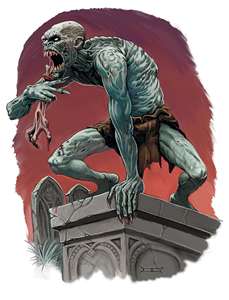
Haunted Eyes (Ex): The Thriller gains a +4 bonus on saves against fear, energy drain, death effects, and necromantic effects, even though, as an undead monster, he’s immune to most of this.
Haunting Refrain (Su): The Thriller is able to stir primal terrors in the hearts of listeners. It can use a Perform (percussion) check in place of an Intimidate check to demoralize an opponent, with a +5 bonus. In addition, saving throws against any fear effect it creates are made with a –3 penalty.
Irresistible Dance (Su): Any living, intelligent creature that witnesses the Thriller’s uncanny dance moves may be overwhelmed with the urge to join in. To trigger this ability, the Thriller must spend a full round dancing. Any affectable creature within 30 feet of the Thriller who sees its dance must make a DC 25 Will save. If a creature’s saving throw succeeds, the Thriller cannot attempt to affect that creature again with this ability for 24 hours. If this save fails, the victim must use a move action every round for the next 1d4+3 rounds to make a Perform (dance) check. If the victim meets or beats a DC 20 on its Perform (dance) check, it looks really good. Otherwise, it is found without the soul for getting down and suffers 1d4 points of ability damage to Constitution and Dexterity. A humanoid who dies from irresistible dance rises as a dancing ghoul or dancing ghast 1d4+3 minutes later, just as if he had died from Thriller fever.
Paralysis (Su): Creatures damaged by the Thriller’s natural attacks must make a successful DC 25 Fortitude save or be paralyzed for 1d4+1 rounds. Paralyzed creatures cannot move, speak, or take any physical actions. The creature is rooted to the spot, frozen and helpless. Unlike ghouls, the Thriller’s paralysis even affects elves. Unlike hold person and similar effects, a paralysis effect does not allow a new save each round. A winged creature flying in the air at the time that it is paralyzed cannot flap its wings and falls. A swimmer can’t swim and may drown.
Secrets of the Grave (Ex): The Thriller gains a bonus equal to half its bard level on Knowledge (religion) checks made to identify undead creatures and their abilities. The Thriller may use mind-affecting spells to affect undead as if they were living creatures, even if they are mindless (though spells that affect only humanoids do not affect them, even if they were humanoids in life).
Stench (Ex): The Thriller exudes an overwhelming stink of death and corruption in a 10-foot radius. Those within the stench must succeed at a DC 25 Fortitude save, or be sickened for 1d6+4 minutes. The Thriller can suppress this ability as a free action.
Undead Inspiration (Su): The Thriller’s bardic performance abilities can affect undead creatures even if the bardic performance ability is a mind-affecting effect.
GEAR
+4 light fortification padded armor, +2 human bane shortbow, +1 shock arrows (x50), amulet of mighty fists +2, boots of striding and springing, cloak of resistance +3, gloves of arrow snaring, headband of alluring charisma +4, ring of minor fire resistance, ring of protection +3, wand of magic circle against good (50 charges), wand of major image (50 charges), plus another 23,000 gp
Dancing Ghouls and Dancing Ghasts
To create a dancing ghoul or dancing ghast, replace the 2 ranks in Climb with 2 ranks in Perform (dance), or Perform (dance) +7 for dancing ghouls Perform (dance) +9 for dancing ghasts. Add this special ability:
Chorus Attack (Ex): As part of a move action, a dancing ghoul or dancing ghast can attempt a DC 20 Perform (dance) check. If successful, the monster gains a +1 bonus on its first attack roll, with an additional +1 per every adjacent dancing ghoul or dancing ghast that also succeeds in its Perform (dance) check that turn. This bonus lasts until the end of the monster’s next turn, or until it attacks, whichever comes first.
Tags: A to Z, NPCs, Pathfinder monsters, undead
